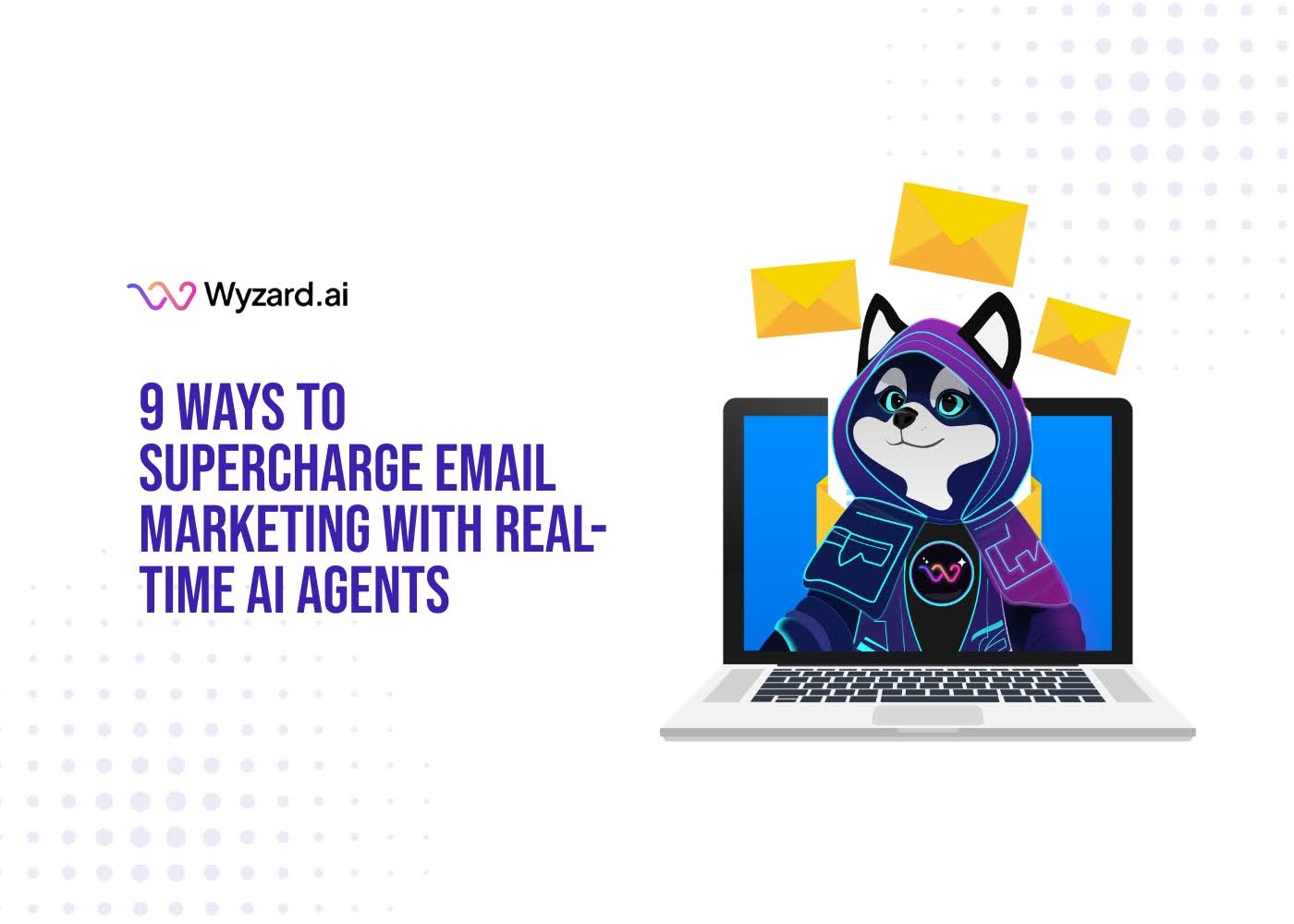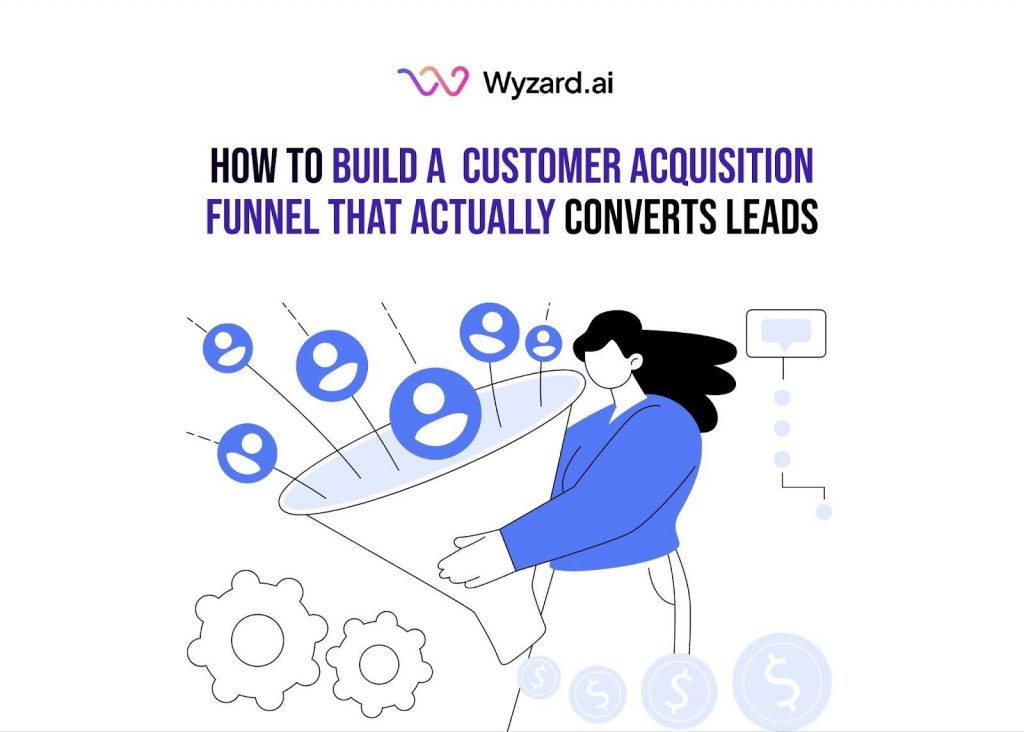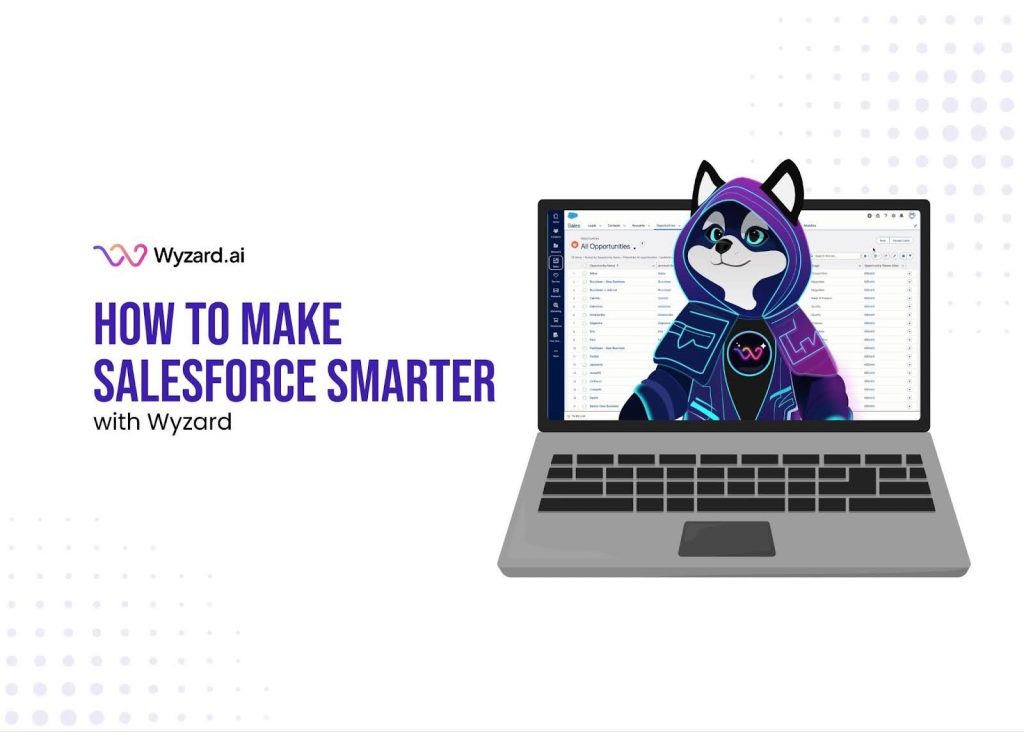You're generating traffic. Leads are visiting your website. But conversions? They're barely moving the needle. The problem isn't your ...

Subscribe Now
When your prospect shows buying intent at 3 AM, your sales team is asleep. When they visit your pricing page during lunch, your follow-up email arrives three days later. This timing gap costs B2B SaaS companies millions in lost pipeline every quarter.
Real-time AI agents are changing this equation entirely. These digital teammates analyze buyer signals as they happen, trigger relevant responses instantly, and adapt messaging based on each prospect’s current context. For mid-market SaaS teams juggling multiple tools and growing contact lists, AI agents offer something traditional email marketing platforms cannot: the ability to act on buying moments before they disappear.
Here are nine specific ways to supercharge your email marketing using real-time AI agents.
Way 1: Deploy Hyper-Personalization That Goes Beyond Name Fields
Stop inserting just first names and company names. Use AI agents to analyze behavioral data across your entire tech stack, website visits, content downloads, product usage patterns, support tickets, and build dynamic profiles of each contact.
These profiles update continuously. When a prospect downloads your ROI calculator, browses competitor comparison pages, and then returns to your pricing page, the AI agent recognizes this as high-intent behavior. It automatically generates an email addressing their specific evaluation stage, references the content they’ve consumed, and suggests next steps that match their research pattern.
Wyzard.ai’s Agentic Email ensures every message matches where your prospect is in their journey, timely, relevant, and ready to convert. The platform captures signals from multiple sources and orchestrates follow-up actions without requiring marketers to build complex workflow trees for every scenario.
Way 2: Optimize Send Times for Each Individual Contact
Forget batch sends at 10 AM Tuesday. Use AI agents to analyze individual engagement patterns and determine when each contact typically opens and clicks emails.
Your CFO prospect reads emails at 6 AM before meetings start, while your marketing director contact engages most between 2-4 PM. The AI agent delivers each message during that specific person’s active window, moving beyond simple timezone adjustments.
The agent tracks whether someone prefers morning or evening emails, weekday or weekend sends, and adjusts delivery accordingly. For B2B SaaS marketers managing North American accounts across four time zones, this granular optimization happens automatically.
Implementation requires no additional work from your team. Connect your email platform to the AI agent, and it begins tracking engagement patterns immediately. Within two weeks, you’ll see measurable improvements in open rates as the system identifies optimal windows for each contact.
Way 3: Generate Dynamic Content That Speaks to Each Segment
Stop writing dozens of email variants manually. Let AI agents generate content dynamically, pulling from your brand guidelines, product information, and each contact’s profile.
When targeting prospects who abandoned your trial signup, the agent crafts messages addressing common objections identified in historical data. For customers approaching renewal, it generates emails highlighting features they’ve used most and quantifying the value delivered. Each message maintains your brand voice while speaking directly to the recipient’s situation.
The system improves through continuous learning. As campaigns run, the AI analyzes which subject lines, body copy, and CTAs drive engagement with different audience segments. These insights feed back into content generation, creating a self-improving system that gets better at resonating with your audience over time.
For teams managing multiple product lines or serving diverse customer segments, this capability eliminates the need to manually write dozens of email variants. The AI handles the variation while marketers focus on strategy and high-level messaging frameworks.
Way 4: Run Continuous Multivariate Testing Without Manual Setup
Stop waiting weeks for A/B test results. Use AI agents to run multivariate tests continuously, examining subject lines, preview text, email layouts, CTA placement, and messaging approaches simultaneously.
When the system identifies winning combinations, it automatically allocates more traffic to high-performing variants without waiting for manual intervention. This approach accelerates learning cycles dramatically. Instead of testing four subject lines over two weeks, the AI might evaluate twenty variations and implement the top performers within days.
The testing extends beyond basic elements. AI agents experiment with different personalization strategies, content depths, and value propositions to discover what resonates with specific microsegments. A pricing-focused message might outperform a feature comparison for CFO buyers, while the opposite holds for technical evaluators.
For SaaS marketers pushing monthly product updates or seasonal campaigns, this speed advantage translates directly to better performance without consuming additional team bandwidth.
Way 5: Apply Predictive Scoring to Prioritize High-Intent Contacts
Stop treating all email clicks equally. Use AI agents to apply predictive models that score leads based on comprehensive behavioral signals.
These models weigh actions differently, pricing page visits score higher than blog reads, repeated visits within short timeframes indicate higher urgency, and engagement with implementation content suggests active evaluation. Someone downloading your ebook might be researching broadly, while another person viewing your implementation guide three times in two days is probably evaluating solutions actively.
When the AI identifies high-intent contacts, it automatically triggers appropriate responses. A prospect showing strong buying signals might receive direct outreach from sales, while early-stage contacts continue receiving nurture content. This intelligent routing ensures sales teams focus on conversations with the highest conversion probability.
The system also predicts negative outcomes. If engagement patterns suggest churn risk among current customers, the AI can trigger retention-focused campaigns before the renewal conversation becomes difficult. For B2B SaaS companies where customer lifetime value far exceeds acquisition cost, early identification of at-risk accounts protects revenue.
Learn more about how AI agents transform cold email outreach by identifying and acting on high-intent signals.
Way 6: Monitor Campaign Performance in Real-Time and Auto-Correct Issues
Stop analyzing campaigns days after they complete. Use AI agents to monitor campaigns in real-time, tracking open rates, click-through rates, and conversion metrics as messages are delivered.
When performance falls below expected benchmarks, the system investigates potential causes: deliverability issues, audience mismatch, message problems, or timing concerns. Based on the diagnosis, the agent implements corrective actions.
If subject lines underperform, it switches to higher-performing variants mid-campaign. When specific segments show poor engagement, it pauses sending to those groups and adjusts targeting. For deliverability problems, it modifies sender behavior to protect your domain reputation.
This monitoring extends to individual contact behavior. If someone suddenly stops engaging after months of regular opens, the AI flags this change and adjusts their treatment. Rather than continuing to send messages that damage your metrics, the system adapts automatically.
Way 7: Orchestrate Cross-Channel Actions Based on Email Engagement
Stop treating email as an isolated channel. Use AI agents to orchestrate actions across your entire tech stack based on email engagement signals.
When someone clicks your demo CTA, the agent doesn’t just route them to a form; it checks whether sales has existing context on this contact, pulls relevant conversation history, and surfaces this intelligence to the rep who takes the call.
For trial users, the email engagement signals feature interest areas. If someone repeatedly clicks content about your API integration capabilities, the AI shares this signal with customer success teams. During onboarding calls, reps can focus conversations on the capabilities the prospect has already shown interest in exploring.
This orchestration also works in reverse. When sales marks a deal as closed-lost, the AI adjusts email treatment for that contact. Instead of continuing to receive sales-focused messaging, they shift to thought leadership content that maintains the relationship for future opportunities.
Wyzard.ai functions as this orchestration layer, capturing buyer signals across your entire tech stack and triggering appropriate actions instantly. Rather than signals getting lost between disconnected tools, Wyzard.ai’s platform ensures every buying moment receives a timely, relevant response.
Way 8: Automate Comprehensive Performance Analysis and Strategic Insights
Stop spending hours building reports manually. Use AI agents to automate comprehensive performance reporting, tracking metrics from basic engagement through revenue attribution.
The analysis identifies patterns human reviewers might miss: certain subject line structures that consistently outperform alternatives, times when specific customer segments show heightened engagement, or content types that correlate with faster deal cycles.
These insights inform strategic decisions. If the data shows technical content drives significantly more pipeline from mid-market accounts than enterprise, that finding influences content production priorities. When analysis reveals certain nurture sequences produce higher trial-to-paid conversion rates, marketing can shift more contacts into those tracks.
The reporting also quantifies AI agent impact specifically. By comparing performance metrics before and after implementing AI-driven email marketing, teams can calculate ROI precisely. For organizations justifying marketing technology investments to leadership, this concrete demonstration of value creation matters significantly.
Way 9: Implement Instant Speed-to-Lead Response for Every Signal
Stop making prospects wait hours for responses. Use AI agents to eliminate response delays by triggering appropriate emails immediately when someone exhibits high-intent behaviors.
B2B research consistently shows that response speed correlates directly with qualification rates. Contacts engaged within five minutes of showing intent convert at substantially higher rates than those receiving responses hours or days later.
When someone fills out a form, downloads gated content, or exhibits other high-intent behaviors, the system triggers appropriate emails immediately. No waiting for business hours, no queuing behind other manual tasks, no dependency on team capacity.
This speed advantage matters especially for competitive evaluations. Your prospect isn’t researching solutions in isolation; they’re comparing three or four alternatives simultaneously. The vendor who provides relevant information first often shapes the evaluation criteria, creating an advantage throughout the buying process.
For implementations, connect your email platform to your website, CRM, and product analytics. When high-intent signals appear in any system, the AI agent sees them instantly and acts. Speed-to-lead email sequences become automated responses rather than manual workflows your team must remember to execute.
Implementing These Ways in Your Email Marketing Strategy
Start with one or two ways rather than trying to implement all nine simultaneously. Perhaps you begin with send-time optimization and dynamic content generation for your highest-volume nurture campaigns. Once those work smoothly, expand to predictive scoring and automated testing.
The critical success factor is data quality. AI agents need accurate, complete information to make good decisions. Before implementation, audit your contact data for accuracy, establish clear definitions for key fields, and implement processes to maintain data quality ongoing basis.
Most AI agent solutions integrate with existing tools, your ESP, CRM, marketing automation platform, and analytics systems. You don’t need to replace your current email platform or rebuild your entire marketing stack.
For B2B SaaS teams specifically, look for AI solutions that understand your buying patterns. Generic retail-focused AI won’t account for the long sales cycles, multiple decision-makers, and complex evaluation processes that characterize software purchases. AI agents built for email marketing personalization at scale handle these complexities naturally.
FAQs
1: How do real-time AI agents differ from traditional email automation tools?
Traditional email automation tools follow pre-set rules and workflows that you manually configure. Real-time AI agents continuously learn from data, adapt strategies automatically, and make decisions based on live behavioral signals. While automation tools send emails based on triggers you define (like “3 days after signup”), AI agents analyze individual engagement patterns, predict intent, and adjust messaging dynamically without requiring manual workflow updates for every scenario.
2: What data do AI agents need to personalize email marketing effectively?
AI agents work best when connected to multiple data sources: your CRM for contact information and deal stages, email platform for engagement history, website analytics for browsing behavior, product usage data for SaaS customers, and support tickets for interaction context. The more comprehensive your data integration, the better the AI can understand each contact’s journey and deliver relevant messaging. However, data quality matters more than quantity; accurate, clean data from fewer sources outperforms messy data from many systems.
3: How long does it take to see results after implementing AI agents in email marketing?
Most teams notice improvements in send-time optimization and basic personalization within 2-3 weeks as the AI learns individual engagement patterns. More sophisticated capabilities like predictive scoring and dynamic content generation typically show measurable impact within 4-6 weeks. The learning curve accelerates over time, and AI agents become more effective as they process more data and identify patterns specific to your audience. Teams with larger contact databases and higher email volumes generally see faster improvements.
4: Do AI agents replace the need for human email marketers?
No. AI agents handle repetitive tasks like testing variations, optimizing send times, and triggering responses to behavioral signals. This frees human marketers to focus on strategy, creative direction, messaging frameworks, and campaign planning. Think of AI agents as powerful teammates that execute tactics at scale while humans provide strategic oversight, maintain brand voice, and make judgment calls on sensitive situations. The most effective email marketing programs combine AI efficiency with human creativity and strategic thinking.
5: What’s the typical ROI of implementing AI agents for email marketing?
ROI varies based on your current email performance and implementation scope, but most B2B SaaS companies see 20-40% improvements in key metrics like open rates, click-through rates, and email-attributed pipeline within the first quarter. The cost savings come from reduced manual work on segmentation, testing, and reporting, tasks that previously consumed 10-15 hours weekly per marketer. For mid-market SaaS teams, the combination of improved performance and time savings typically delivers positive ROI within 3-6 months, with ongoing benefits compounding as the AI continues learning.
Other blogs
The latest industry news, interviews, technologies, and resources.
How to Make Salesforce Smarter with Wyzard.ai
Your CRM is packed with contacts, but how many buying signals are you missing right now? A prospect just ...

Unlock Real-Time HubSpot Automation with Wyzard.ai
Your HubSpot portal holds valuable data about every lead, deal, and customer interaction. But if you're waiting hours, or ...

 We’ve secured funding to power Signal-to-Revenue AI to GTM teams globally. →
We’ve secured funding to power Signal-to-Revenue AI to GTM teams globally. →


